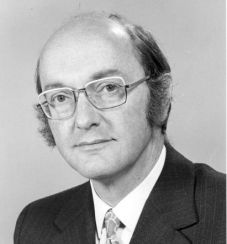In the mid-1960s, Davies was a researcher with Britain’s National Physical Laboratory, or NPL, when he started exploring a new breed of networking that involved breaking information into tiny messages, before shipping them from place to place. He dubbed the tiny messages “packets,” and after he and other NPL researchers unveiled a paper on this research, the name stuck — as did the technology. In a very big way.
At the time, others were developing similar networking techniques, including Paul Baran at the RAND Corporation, Leonard Kleinrock at the University of California, Los Angeles, and Larry Roberts with ARPA, the research operation funded by the U.S. Department of Defense, and all four of these efforts dovetailed as Roberts and ARPA spawned the ARPAnet, a packet-switched network that would eventually give rise to the internet.

“Kleinrock, Baran, Davies, and Roberts developed their [packet-switching] ideas pretty much independently,” says Vint Cerf, another Internet founding father, before explaining that these ideas then came together as the ARPAnet got off the ground in the late ’60s.
Davies passed away in 2000 and, according to Cerf, the British researcher felt he never got the credit he deserved for the rise of the ARPAnet and packet-switching in general. But those on the inside realize the importance of his role. This past April, Davies was part of the inaugural class inducted into the Internet Society’s (ISOC) Internet Hall of Fame, taking his place alongside Cerf, Baran, Roberts, Kleinrock, and others.
Donald Davies joined the NPL in the 1947, where he worked alongside Alan Turing on the Automatic Computing Engine, or ACE, one of the world’s first digital computers. According to a Davies obituary in The Guardian, he attended a lecture on the ACE while still at Imperial College, Oxford and soon applied to join Turing’s team. Turing left the NPL in 1948, but Davis stayed on, shepherding an outgrowth of the original project known as the Pilot ACE.
But by 1966, he had turned his attention to networking, looking for a means of moving information between machines that was more agile than the time-sharing networks of the day, which relied on the standard technology used to route phone calls. In 1967, according to a Davies obit from the Associated Press, a paper on the subject was presented at a conference in Tennessee, where it so happened that Larry Roberts was discussing his work at ARPA. According to Cerf, Davies didn’t make the trip to the U.S., but a member of his team did.
Cerf says Roberts had already laid out a preliminary plan for the ARPAnet, but Davies’ work would also play into the Defense Department network, which officially arrived in the fall of 1969, when a team led by Leonard Kleinrock send a message from UCLA to a second node at the Stanford Research Institute in Northern California. Davies and NPL, Cerf says, were instrumental in the decision to launch the ARPAnet with significantly faster network circuits than the original plan called for.
“That had a direct effect on the ARPAnet,” Cerf says. With their setup in the U.K., Cerf explains, Davies and NPL had seen firsthand that the faster circuits were essential to reducing the delays that could bog down a packet-switched network.
Back in the U.K., Davies would roll out a packet-switched network known as the Mark I — later replaced by the Mark II. This eventually faded away. It was the ARPAnet and its TCP/IP protocols that would spawn the Internet. But our modern network still bears the mark of Donald Davies. “He invented the term packet,” Cerf says.